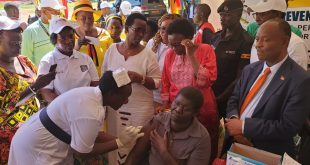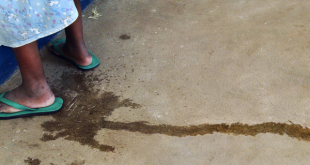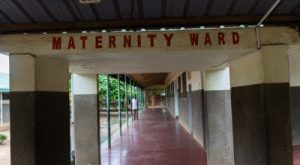
BY RICHARD DRASIMAKU
ARUA: WEDNESDAY, MARCH 15, 2023
Once considered extinct, Africa’s largest soft-shell turtle known as the Nubian Flapshell turtle has made an unexpected comeback in river Nile sections in Uganda’s West Nile and parts of South Sudan.
However, the river shores along Enyau, a tributary of river Nile and along the Nile to Laropi and Dufile near the border to Paanzalla and river Onyama in South Sudan where the turtles have been spotted remain largely unsecured and unprotected.
Dr Mathias Behangana, a herpetologist and expert on conservation of amphibians and reptile says there is urgent need to protect and conserve such a charismatic species.
“Such a big turtle could be a charismatic species to environment where you had big animals such as white rhinos that have disappeared. It could be used to name places,” he said.
Estimated to be weighing up to 100kg, the Nubian Flapshell turtle would be a revered catch for a village feast and collection for local consumption is suspected to constitute the major threat to the critically endangered turtle.
Planned hydro dam projects, encroachment into habitats by refugees and infrastructure project developers including the Chinese road construction staff who are said to be paying a lot of money to buy such big catch are some drawbacks fueling the threat margins against the turtles.
Dr Behangana said they have documented instance of Bari fishermen in South Sudan who consume the flesh of the big turtle and opportunistic collection of the eggs by pastoralists who graze cattle in the grasslands that form when the Nile waters recede.
The Nubian flapshell turtle is reported to be laying eggs as big as the egg of an ostrich and the researcher says that communities were also eager to sell turtle shells to them during field work at as little as sh30,000.
This is an indication of lack of awareness about the ecological importance of the turtle to biodiversity.
Dr Behangana explained that turtles have huge ecological importance to the wild because as they feed on several things, they manage their own environment.
The turtle could also be a massive boost to the tourism industry if the government focused on its conservation by establishing community conservancies.
“It is not found in a zoo anywhere in the world. Only a few shells in museums in areas where it was once thought to have existed,” he highlighted.
Dr Behangana was speaking during the inaugural science café of the NileWell, a project of the InfoNile aimed at connecting environmental journalists with scientist and researchers.
His presentation hankered on an-ongoing research on the conservation status of the Nubian Flapshell turtle in North-western Uganda and parts of South Sudan.
Funded by the United States Fish and Wildlife Services, Turtle Survival alliance and the Rainforest Trust, Dr Behangana has partnered with Prof Luca Luselli to undertake the first ever research aimed at securing the survival of the species from extinction.

He said the turtles are believed to have existed in countries including Ghana, Nigeria, Cameroon, Central African Republic, Chad and Sudan.
By 1996, the turtle was described as near threatened by the International Union for Conservation of Nature (IUCN) red list and after over two decades of not seeing any live Nubian flapshell turtle, the listing was updated to extinct.
The classification reversed to critically endangered in 2021 after confirmation by researchers that they found new turtles in 2017.
“In 2017, Prof Luca’s team rediscovered the turtle in South Sudan. He set up a study centre at the University of Juba and then called me,” Dr Behangana told journalists during the online café.
He said from 2021 to 2023, they have pinpointed key spots based on narrations from the community and field sighting to locate the areas with the turtle’s presence.
One such area is Ediofe Bridge on River Enyau in Arua city where locals have told stories of a turtle of that type that was captured and eaten by “Manya” boys a few years ago.
Other sightings were made at the Balala marshes where the river Enyau joins the Nile and around the Laropi/Dufile areas.
Dr Behangana recommended urgent conservation measures possibly including establishing protected areas and measures to manage targeted capture and reduce by-catch in fisheries to protect the turtle.



